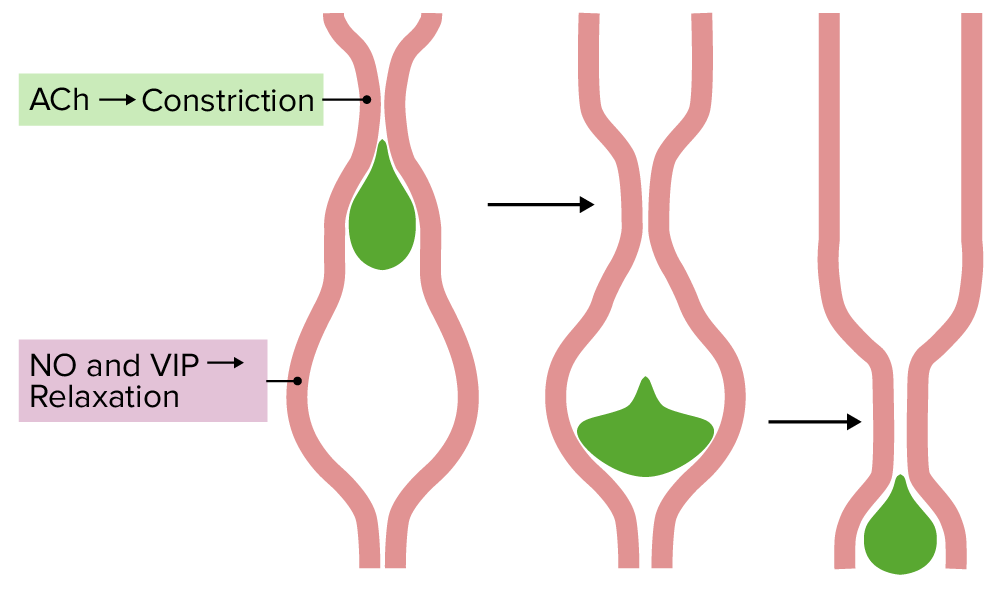Playlist
Show Playlist
Hide Playlist
Intestinal Motility – Gastrointestinal Motility
00:01 So now, let’s move a little bit past the stomach into the intestine. 00:05 The intestines will involve many types of peristaltic type movements. 00:11 But they also have some mixing movements that occur as well. 00:15 And these are called segmentation contractions. 00:17 These segmentation contractions are these mixing process. 00:23 And the reason why is because a peristaltic contraction would contract and move it along, while these contractions are having a number of the contractions occurring at the same time, which moves the food stuff in both directions rather than only in one direction. 00:37 So peristalsis in the intestine looks very much like this where you have a contraction, relaxation in front of it, just like we did in the esophagus. 00:49 The last type of interesting intestinal motility issue is something called a migrating motor complex. 00:57 These are very, very, very large contractions that are coordinated from the top portion of the intestine all the way down to the lower intestine. 01:08 These are done kind of like house cleaning to move things along in rapid progression. 01:14 Because if you can imagine, these segmentation contractions, moving things around and mixing them up and even peristalsis allows for some movement down the GI tract, but every now and then, you need a really big movement that moves it for a larger degree. 01:31 And these are migrating motor complexes.
About the Lecture
The lecture Intestinal Motility – Gastrointestinal Motility by Thad Wilson, PhD is from the course Gastrointestinal Physiology.
Included Quiz Questions
Which direction is the foodstuff moved by segmental contractions?
- It moves both forward and backward.
- It only moves forward.
- It only moves backward.
- It is not moved but mixed in place.
- It moves in a peristaltic fashion.
Which of the following represents a large coordinated contraction meant to move intestinal contents along rapidly?
- A migrating motor complex
- A peristaltic wave
- A segmental contraction
- A tonic contraction
- An isometric contraction
Customer reviews
5,0 of 5 stars
| 5 Stars |
|
5 |
| 4 Stars |
|
0 |
| 3 Stars |
|
0 |
| 2 Stars |
|
0 |
| 1 Star |
|
0 |




